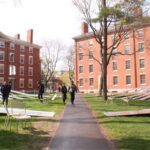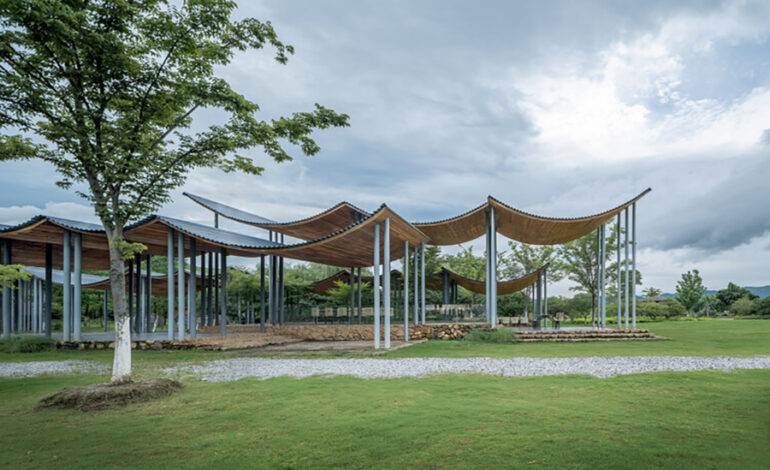Exploring Space and Perception Inversive Enclosure Installation

Introduction
In 2023, as part of the First Arts Festival at Harvard University, the “Inversive Enclosure” installation emerged as one of the four innovative designs. Collaboratively created by Alsar Atelier, Karim Saleh Studio (KSS), Oscar Zamora, and Pietro Mendonca, this installation stands as a testament to artistic exploration and spatial reinterpretation within Harvard Yard.

Concept and Inspiration
Situated in Harvard Yard, the symbolic heart of the campus, “Inversive Enclosure” draws inspiration from the mathematical concept of three-dimensional inverse geometry. Through reflection and inversion, the project seeks to encapsulate the essence of its surroundings, offering visitors a unique perspective on their environment.
Design and Structure
Spanning an area of 350 square meters, the installation comprises a rectangular space with a central circular motif, creating a distinctive enclosure. Mylar strips, meticulously arranged and attached to the floor and main structure, define the boundaries of the space, forming a pixelated circle. Two openings, strategically positioned opposite each other, allow for visitor access and circulation.

Spatial Experience
The mylar strips, sloping upwards to eye level at the perimeter, create a convex space that momentarily alters visitors’ perception of Harvard Yard. Despite the Yard’s abundance of bricks and greenery, it often goes unnoticed by passersby. “Inversive Enclosure” aims to provide an introspective experience, inviting visitors to rediscover and reconnect with their surroundings.

Engaging with History
Harvard Yard, characterized by its discrete buildings and mature trees, exudes a sense of enclosure. “Inversive Enclosure” serves as an enclosure within an enclosure, distorting both natural and built elements of the space. By engaging with the history and identity of the Yard, the installation offers a thought-provoking exploration of space and perception.

Provoking Contemplation
Through its materiality, tactility, and environmental conditions, “Inversive Enclosure” challenges visitors’ perceptions and understanding of place. By prompting contemplation and introspection, the installation invites viewers to question their relationship with the environment, fostering a deeper connection to the space.
Conclusion
“Inversive Enclosure” stands as a testament to artistic innovation and spatial exploration. Through its unique design and conceptual framework, the installation offers visitors a transformative experience within Harvard Yard, encouraging reflection and reimagining of their relationship with the built environment.























